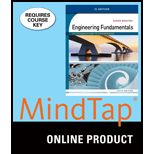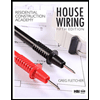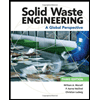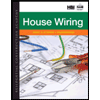
MindTap Engineering, 2 terms (12 months) Printed Access Card for Moaveni's Engineering Fundamentals, SI Edition, 5th
5th Edition
ISBN: 9781305110250
Author: MOAVENI, Saeed
Publisher: Cengage Learning
expand_more
expand_more
format_list_bulleted
Concept explainers
Question
Chapter 12, Problem 30P
(a)
To determine
Find the efficacy of the Sylvania accent LED light.
(b)
To determine
Find the efficacy of the Sylvania
Expert Solution & Answer
Want to see the full answer?
Check out a sample textbook solution
Students have asked these similar questions
1. Determine the bearings, azimuths, and lengths of lines AB, BC, CD, and DA for the closed loop
traverse data shown below in Table 1. Show calculations.
Table 1
Station
Northing [ft]
Easting [ft]
A
1,000
1,000
B
750
1,750
C
1,345
2,255
D
1,567
1,345
2. Compute the bearings of sides BC and CD in Figure 1. Show all work for all angles.
A
B
70°10'
S72°39'W
C
94°35'
Figure 1
Tt
(+)
B
D
hoph
-
AT
10x
AT
10.076 ht
0.076
0
0-1846112
14884 xh
T 1.632m
h-4-
(1-22)
h = 1.022m
14. The 4-ft-diameter cylinder, 4 ft long, is acted upon by
water on the left and oil of sp gr 0.800 on the right.
Determine (a) the normal force at B if the cylinder weighs
4000 lb and (b) the horizontal force due to oil and water if
the oil level drops 1 ft.
Solution
Water
Oil
B
3. The following data was collected for the traverse shown in Figure 2.
a. Determine the latitudes and departures for all sides.
b. Determine the linear error of closure and the accuracy ratio.
C.
Correct and balance the latitudes and departures.
A
N80°27'E
467.81 ft
497.50 ft
N56°46' W
B
S34°51'E
483.69 ft
325.06 ft
D
N81°48' W
Chapter 12 Solutions
MindTap Engineering, 2 terms (12 months) Printed Access Card for Moaveni's Engineering Fundamentals, SI Edition, 5th
Ch. 12.1 - In what unit is electric current measured?Ch. 12.1 - Prob. 2BYGCh. 12.1 - Prob. 3BYGCh. 12.1 - Prob. 4BYGCh. 12.1 - Prob. 5BYGCh. 12.1 - Prob. 6BYGCh. 12.1 - Prob. BYGVCh. 12.2 - Prob. 1BYGCh. 12.2 - Prob. 2BYGCh. 12.2 - Prob. 3BYG
Ch. 12.2 - Prob. 4BYGCh. 12.2 - Prob. 5BYGCh. 12.2 - Prob. 6BYGCh. 12.2 - VocabularyState the meaning of the following...Ch. 12.4 - Prob. 1BYGCh. 12.4 - Prob. 2BYGCh. 12.4 - Prob. 3BYGCh. 12.4 - Prob. 4BYGCh. 12.4 - Prob. 5BYGCh. 12.4 - Prob. 6BYGCh. 12.4 - Prob. BYGVCh. 12 - Prob. 1PCh. 12 - Prob. 2PCh. 12 - Prob. 3PCh. 12 - Prob. 6PCh. 12 - Prob. 8PCh. 12 - Prob. 9PCh. 12 - Prob. 10PCh. 12 - Prob. 16PCh. 12 - Prob. 18PCh. 12 - Prob. 19PCh. 12 - Prob. 20PCh. 12 - Prob. 21PCh. 12 - Prob. 23PCh. 12 - Prob. 24PCh. 12 - As you know, a fuse is a safety device that is...Ch. 12 - Prob. 27PCh. 12 - Prob. 28PCh. 12 - Prob. 29PCh. 12 - Prob. 30PCh. 12 - Prob. 31P
Knowledge Booster
Learn more about
Need a deep-dive on the concept behind this application? Look no further. Learn more about this topic, civil-engineering and related others by exploring similar questions and additional content below.Similar questions
- Please answer the questions in the picture. Thank you for your help!arrow_forward1500 N A B 3500 N/m 1.2 m 3.6 m 1.2 m 1800 N Beam Cross-section: 4b T D b 25 mm 100 mm For beam ABCD with cross-section shown, design the beam by determining the following: Draw the shear and bending moment diagrams (show your detailed computations to get credit) The minimum dimension for b [mm], knowing that the allowable flexural stress and transverse shear stress are 10 MPa and 0.5 MPa, respectively.arrow_forwardCivil engineering quantiarrow_forward
- Please answer the questions in the picture. Thank you for your help. For part B use the Second Picture.arrow_forwardDerive by deconvolution the six-hour unit hydrograph from the following data for a watershed having a drainage area of 216 km2 , assuming a constant rainfall abstraction rate and a constant baseflow of 20 m3 /s. Six-hour period 1 2 3 4 5 6 7 8 9 10 11 Rainfall (cm) 1.5 3.5 2.5 1.5 Streamflow (m3 /s) 26 71 174 226 173 99 49 33 26 22 21 Use the unit hydrograph developed to calculate the streamflow hydrographfrom a 12 hour-duration storm having 2 cm of rainfall excess in the first six hours and 3 cm inthe second six hours. Assume a constant baseflow rate of 30 m3/s.arrow_forwardPlease answer the following question in the picture. Thank you for your help.arrow_forward
- Given the unit hydrographic in the table, calculate the streamdlow hydrographic from a 12 hour duration story having 2cm of rainfall excess in the first six hours and 3cm in the second six hours. Assume a constant base flow rate of 30 m3/sarrow_forwardBased on the following information, what is the owner’s equity? Current Assets: $162,000Current Liabilities: $91,000 Fixed Assets: $290,000 long-Term Debt: $140,000arrow_forwardPlease refer to the below figure. Use f y = 60,000 psi and f c′ = 3000 psi. Each web is reinforced with 2-#4 rebars in one layer. (a) Use the entire flange width as effective. Determine if the interior Double-Tee beam behaves as a T-beam or rectangular beam. (b) Determine the design moment strength of the section. Hint: You can collapse the two webs in a single web as discussed in class.arrow_forward
- Grade is being established to the bottom of a footing that is 24” thick. The elevation of thetop of the footing is 102.33’. the elevation of the existing grade is 106.14’. the backsight of thesurveying instrument on a benchmark of 100.00’ is 6.78’. what is the correct reading for the rodat the bottom of the footing?arrow_forward6.48 This "double" nozzle discharges water (p = 62.4 lbm/ft³) into the atmosphere at a rate of 16 cfs. If the nozzle is lying in a horizontal plane, what X-component of force acting through the flange bolts is required to hold the nozzle in place? Note: Assume irrotational flow, and assume the water speed in each jet to be the same. Jet A is 4 in. in diameter, jet B is 4.5 in. in diameter, and the pipe is 1.4 ft in diameter. A 30°F B Problem 6.48 Xxarrow_forward6-1 For the rectangular beam shown in Fig. P6-1, (a) Draw a shear-force diagram. (b) Assuming the beam is uncracked, show the direction of the principal tensile stresses at middepth at points A, B, and C. (c) Sketch, on a drawing of the beam, the inclined cracks that would develop at A, B, and C. 10 kips A B 1 kip/ft 7.5 ft Fig. P6-1 + 7.5 ft 6 ft 10 kipsarrow_forward
arrow_back_ios
SEE MORE QUESTIONS
arrow_forward_ios
Recommended textbooks for you
 Engineering Fundamentals: An Introduction to Engi...Civil EngineeringISBN:9781305084766Author:Saeed MoaveniPublisher:Cengage Learning
Engineering Fundamentals: An Introduction to Engi...Civil EngineeringISBN:9781305084766Author:Saeed MoaveniPublisher:Cengage Learning
 Residential Construction Academy: House Wiring (M...Civil EngineeringISBN:9781337402415Author:Gregory W FletcherPublisher:Cengage Learning
Residential Construction Academy: House Wiring (M...Civil EngineeringISBN:9781337402415Author:Gregory W FletcherPublisher:Cengage Learning Solid Waste EngineeringCivil EngineeringISBN:9781305635203Author:Worrell, William A.Publisher:Cengage Learning,
Solid Waste EngineeringCivil EngineeringISBN:9781305635203Author:Worrell, William A.Publisher:Cengage Learning, Residential Construction Academy: House Wiring (M...Civil EngineeringISBN:9781285852225Author:Gregory W FletcherPublisher:Cengage Learning
Residential Construction Academy: House Wiring (M...Civil EngineeringISBN:9781285852225Author:Gregory W FletcherPublisher:Cengage Learning Sustainable EnergyCivil EngineeringISBN:9781133108689Author:Richard A. DunlapPublisher:Cengage Learning
Sustainable EnergyCivil EngineeringISBN:9781133108689Author:Richard A. DunlapPublisher:Cengage Learning

Engineering Fundamentals: An Introduction to Engi...
Civil Engineering
ISBN:9781305084766
Author:Saeed Moaveni
Publisher:Cengage Learning


Residential Construction Academy: House Wiring (M...
Civil Engineering
ISBN:9781337402415
Author:Gregory W Fletcher
Publisher:Cengage Learning

Solid Waste Engineering
Civil Engineering
ISBN:9781305635203
Author:Worrell, William A.
Publisher:Cengage Learning,

Residential Construction Academy: House Wiring (M...
Civil Engineering
ISBN:9781285852225
Author:Gregory W Fletcher
Publisher:Cengage Learning

Sustainable Energy
Civil Engineering
ISBN:9781133108689
Author:Richard A. Dunlap
Publisher:Cengage Learning